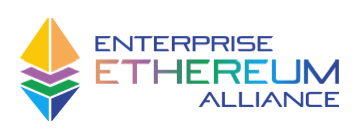By Bradley Stone, EEA Research Lead
“It’s an exciting yet challenging time, and we want to expand the working group, especially with the increasing importance of cross-chain interoperability in the industry.”
Cross-chain interoperability is defined as the ability to transfer assets from one blockchain to another, send and receive messages across blockchains, and initiate actions across multiple blockchains. As the blockchain space evolves, cross-chain communication has become one of its most crucial aspects. This includes working within the context of public Ethereum blockchains.
In a conversation with Weijia Zhang, Chair of the EEA Crosschain Interoperability Working Group and Vice President of Engineering at Wanchain, we delve into the opportunities, challenges, and future of cross-chain use cases, DeFi, and standards. Here’s what he had to say:
Weijia, what’s the current state of cross-chain interoperability, and how is the Crosschain Working Group addressing it?
A: We have published documents outlining cross-chain interoperability use cases and guidelines to help educate decision-makers and teams on implementing cross-chain technology with safety as a top priority. Ongoing work expands upon these efforts and includes specifications that we hope will soon be adopted by the industry as interoperability standards. It’s an exciting yet challenging time, and we want to expand the group, especially with the increasing importance of cross-chain interoperability in the industry.
You’ve written a textbook and currently lead the Smart Contract Development course at the University of Texas as an adjunct faculty. How do you make valuable content in this new and constantly changing field?
Teaching offers unique challenges. Students of blockchain technology are eager to be more involved in enterprise-level development but often find themselves drawn outside of the industry. Often, students join a pilot blockchain project with a major corporation only to see that project lose funding or fall off the map in under two years. Much of that is still dependent on economic conditions, also constrained by the regulatory environment. However, the effectiveness of training and educational materials is also at odds with the speed of new developments in the industry. Blockchain-related technology is evolving at a rapid pace. All of this only accentuates the need for adequate training and education. The ecosystem is behind in hiring people with the right skills, and this gap must be filled.
Innovations like ZK and layer-two offer solutions to some of the most significant problems holding back mass adoption of Ethereum, yet challenges persist. Can you expand on this?
A: ZK may effectively solve the privacy issue, but scalability remains a concern on several levels. Nonetheless, the ecosystem is making progress. Ethereum 2.0’s success and innovations like ConsenSys zkEVM are promising signs. Ethereum’s smooth transition to proof-of-stake consensus, the massive energy savings, and the significant performance improvements enhance Ethereum’s business readiness.
Lastly, Weijia, what’s your outlook on the future of cross-chain interoperability?
It’s complex, but I’m optimistic. We must standardize specifications, continue innovating, and pay attention to regulation spaces.
Upcoming Hackathon & Call for New Working Group Members
Don’t miss the first annual Permissionless II Hackathon on September 9-10th in Austin, TX. Wanchain is one of the sponsors, and this 24-hour event promises to be a crucible of innovation and collaboration. Early applications are open; secure your spot today!
Also, the EEA Crosschain Interoperability Working Group is calling for new members. Join today as part of this essential growth area in the crypto space. Your participation can shape the future!
Bio
Dr. Weijia Zhang is the EEA Regional Head of China at Enterprise Ethereum Alliance and the Vice President of Engineering at Wanchain Foundation. With an extensive background in R&D and engineering, his expertise spans blockchain, cognitive sciences, mental modeling, Computational Fluid Dynamics (CFD), software modeling, computer technologies, and industrial standards. He has authored over thirty research and technical papers and holds more than twenty patents in computer and digital technology.
Dr. Zhang also played a role as a technical committee voting member to publish the Solution Deployment Descriptor (SDD) by OASIS.
In addition to his professional contributions, he serves as an adjunct faculty at the University of Texas, teaching the Smart Contract Development course.
